Skip to content
Driving through Central Texas recently, I made a detour to visit a Fairy . . . and the tiny town named after her.
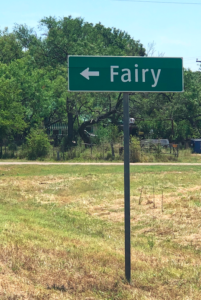
In a state that likes to brag that “bigger is better,” the town of Fairy Texas in Hamilton County named themselves after a surprisingly diminutive member of their community.
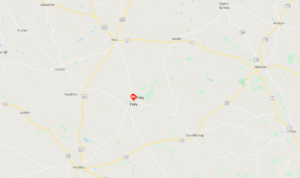 Originally known as Martin’s Gap it was named after James Martin, a settler killed by local Indians in the 1860s while driving cattle through a “gap” between two mountains in the area. He was buried at the foot of one of those mountains.
Originally known as Martin’s Gap it was named after James Martin, a settler killed by local Indians in the 1860s while driving cattle through a “gap” between two mountains in the area. He was buried at the foot of one of those mountains.
As you can see from the map, it isn’t “on the way” to anywhere particularly…but it’s worth a road trip diversion.
When a post office was requested for the town in 1884, locals renamed it “Fairy” to honor Fairy Fort Phelps (1865-1938), the daughter of Sallie and Battle Fort, a former Confederate Army Captain and lawyer.
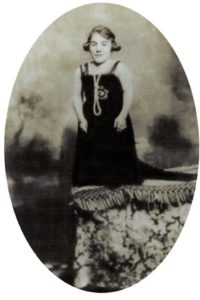
One of the smallest Texans ever, Fairy was just 2’ 7” tall and weighed about 28 pounds. Her size didn’t stop her from leading a somewhat normal life and becoming one of the most beloved people in her community.
Her namesake town once had a cotton gin, school, general store, café and businesses to serve the ranchers in the area.
Fairy had four younger brothers: Henry; Hugh Franklin; William “Battle,” Jr; and Walter Herbert – all of whom were average heights.
Fairy and her father taught area children at a school in their home for many years. One story reflects how respected and well liked she was by her students. The tale states that it became necessary for Fairy to paddle an unruly student, but she couldn’t high enough. The student himself lifted his teacher onto a chair so she could paddle him.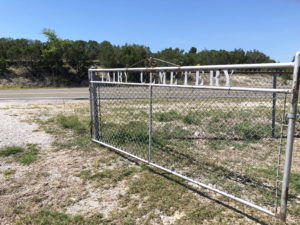
The petite young lady even married twice, once to William Y. Allen in 1892 and again to T. J. Phelps in 1905, but both marriages ended in divorce. Probably not surprisingly, she never had children, but she did live into her 70s and is buried with her parents at…yes…Fairy Cemetery. The sign on the gate alone is enough to back you look twice.
Fairy’s post office closed in 1947, and the school consolidated with Hamilton schools in 1967. A Baptist church, community center, volunteer fire department, a few homes and one historic cemetery are all that endure.
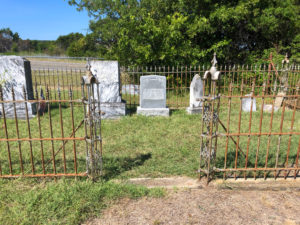
The stories of a petite woman who lived life to the fullest remain with the residents, and those who stop to visit her gated grave.
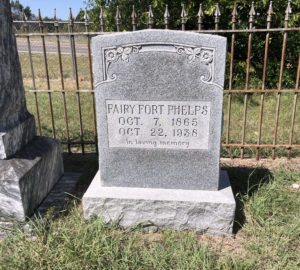
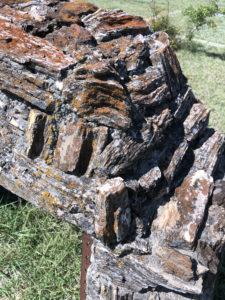 The tiny town’s cemetery is interesting on its own for a variety of style of distinctive, handmade grave markers. Many exhibit expert stone carving skills, but others include one constructed of petrified wood and another meticulously covered with sparkling, local minerals.
The tiny town’s cemetery is interesting on its own for a variety of style of distinctive, handmade grave markers. Many exhibit expert stone carving skills, but others include one constructed of petrified wood and another meticulously covered with sparkling, local minerals.
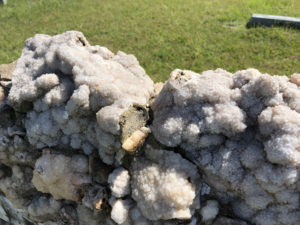
Oh….and if you’re curious what locals are called, they are “Fairians.” How cute is that?
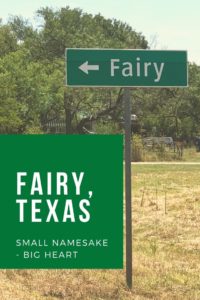
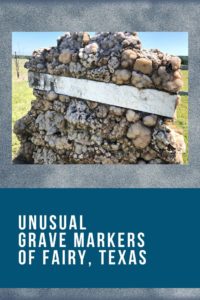
One of the least known and most fascinating museums in Houston surrounds a topic that not everyone is entirely comfortable discussing – funerals.
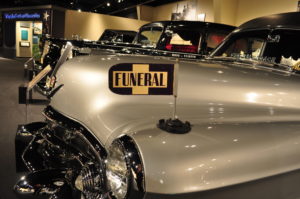
The National Museum of Funeral History isn’t only a great idea to visit around Halloween, though. The tasteful curation of a fascinating collection from across generations and cultures will soon have you roaming around wondering why you haven’t visited before.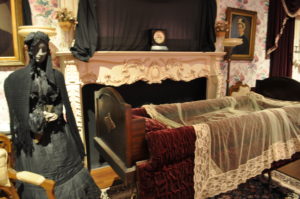
I admit I hadn’t visited the museum since they were in their original, much smaller space so I was wowed by the 30,500 square feet of exhibit space is filled with fifteen permanent displays that explain topics from the lives and deaths of popes, to presidential funerals and the Day of the Dead celebration as well as visiting exhibits.
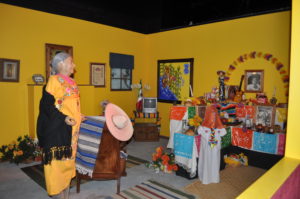
My favorite room is filled with historical hearses, which will especially amaze car enthusiasts. Rare horse drawn carriages from the 19th century sit beside the actual hearses that carried actress Grace Kelly and U.S. Presidents Ronald Reagan and Gerald R. Ford. There’s even a 1916 Packard funeral bus large enough to hold a coffin, pallbearers and up to 20 mourners.
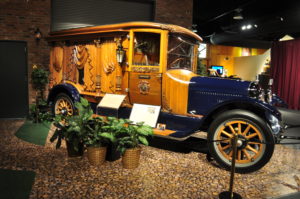
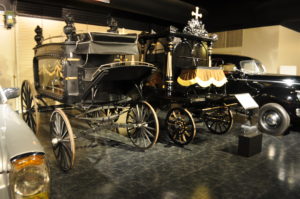
The museum even has Roy Rogers and Dale Evans parade car…and you have to see it in person to believe it!
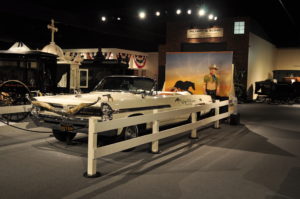
Around each corner are unexpected surprises, including a replica of Snow White’s glass coffin and displays of funeral details of the rich and famous.

A collection of fantasy coffins from Ghana, West Africa captures the personalities of the departed. Imagine being laid to rest in a wooden coffin carved to resemble an eagle, a chicken, an airplane or even a Mercedes Benz! They are truly pieces of art.

Other exhibits explain the history of topics like the history of embalming or 19th Century mourning. They’ll open your eyes to a part of history that isn’t often talked about, but can of course be bypassed if you’re with younger ones who you’d rather not have view them.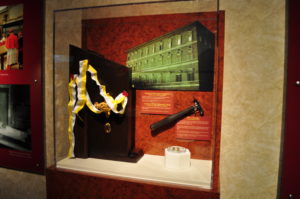
Rest assured though, there is nothing gory or blatant about any of the displays. And yes, there’s a gift shop with a great selection of conversation-starters to commemorate your visit.
Whether you’re looking for something you consider a bit creepy to visit for Halloween, or an unusual museum that your friends probably haven’t even heard of…this is the spot.

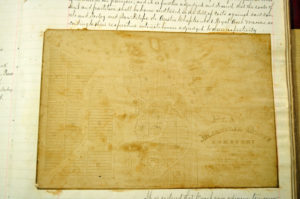
An article I wrote about the history of Magnolia Grove Cemetery (established 1871) will appear in the September issue of Galveston Monthly Magazine. Now, lost this once elegant, Vi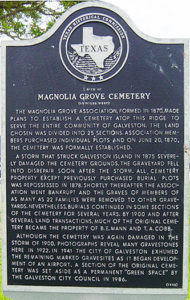 ctorian Era cemetery was the most beautiful burial ground on the island.
ctorian Era cemetery was the most beautiful burial ground on the island.
Not all of the bodies were moved, but the grounds of the cemetery now lie beneath the runways of Scholes Airport and the back nine fairways of the Moody Gardens Golf Course.
My investigation led me to many of the usual resources for history in Galveston, such as the Galveston & Texas History Center (always wonderful), but led me on new research paths as well. No single source seemed to 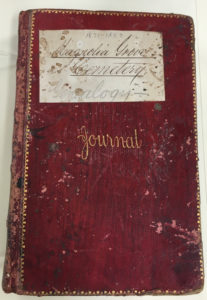 have all of the pieces of information, and many whom I contacted had no knowledge of the lost cemetery at all.
have all of the pieces of information, and many whom I contacted had no knowledge of the lost cemetery at all.
There unfortunately simply wasn’t room to include all of the fascinating information that I found about the lost cemetery, so I will list some of the details here for those who are interested or researching their families.
Magnolia Grove was comprised of 100 acres, divided into 25 sections. They were identified as Sections A through X, and City Circle, otherwise known as Rest of Honor. This circle was reserved for the interment of people of distinguished merit or achievement. The first two burials in this section were the first and last presidents of Texas, David Burnet and Aaron Jones, who were moved from previous burial sites.
Sections 6 and 7 (also known as F & G), which were located on the waterfront, were consecrated by the Catholic Church and reserved for exclusive use of members of that faith.
A portion of Section 2 (B) was purchased by the Masonic lodges and used for burials of Masons and their families. The Tucker fa mily, headed by the president of the Magnolia Grove Cemetery Association, was also located in this section.
mily, headed by the president of the Magnolia Grove Cemetery Association, was also located in this section.
Many of the larger lots in the cemetery were purchased by wealthy families and organizations.
Less expensive public lots for white “clients” were located in Section 4, and for “colored” loved ones in Section 5 of the Eastern Division of Magnolia Grove.
The Spanish Benevolent mausoleum still stood after 1900 in Section D on lots 31 and 32, which was part of the southern half of lot 258. Although heavily damaged by weather and vandalized, the mausoleum still stood in the 1920s.
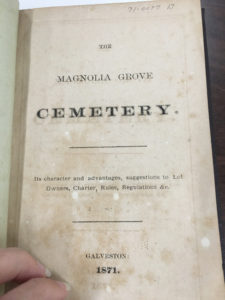 Galveston’s Fireman’s Relief Association purchased a portion of Section B for their members in August 1878.
Galveston’s Fireman’s Relief Association purchased a portion of Section B for their members in August 1878.
Plots in Section J were purchased by Joseph W. Rice and David Guthrie; Section M included family plots for Adriance and Trueheart; Section N for August Kleinecke; and Section P plots belonged to the Sealy, Ball and Hutchings families.
General Wigfall’s plot was in Section Q, and J.P. Davie purchased four lots in Section R.
Section S was home to the The French Benevolent Society lot, as well as the Nahor Biggs Yard and Grover families.
Adolph Flake chose his plot in Section T, but now rests in the Historic Broadway Cemetery District.
John Sidney Thrasher, who married the widow of Galveston’s founder Michel Menard, was buried in the City Circle in 1879.
Of the many illustrious citizens in Galveston who were interred in Magnolia, some remain on the grounds, some were moved to other cemeteries, and some were lost to weather events.
Among the well-known Masons interred at Magnolia Grove who remain there are Henry S. Pearce, First Master of Hope Lodge in another part of the state; Adolph Cycoski, a Civil War veteran and teacher of French in Galveston, also a prominent Mason; and Dr. Benjamin Ball, a prominent businessman who was buried with Masonic ceremonies Feb. 13, 1880.
French native Achilles Mingell; Captain John Price, who formerly owned part of this property, and a residence in the early days; and Isaac McGary, veteran of Texas Revolution,; Mexican American War: and the Battle of San Jacinto are just two of the illustrious people whose graves wer never relocated and are now lost.
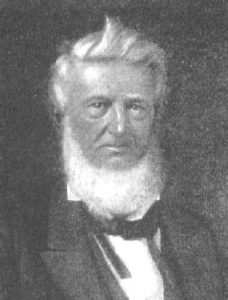 David Burnet (pictured at left) , the first president of Texas, was moved from Magnolia Grove and now rests in the Sherman plot at Lakeview.
David Burnet (pictured at left) , the first president of Texas, was moved from Magnolia Grove and now rests in the Sherman plot at Lakeview.
William Tennant Austin of early Texas revolutionary fame, was mo ved from Magnolia to Lakeview Cemetery.
ved from Magnolia to Lakeview Cemetery.
Anson Jones (pictured at right), the last president of Texas, was originally buried in Trinity Episcopal Cemetery, moved to Magnolia Grove Cemetery five miles away in 1871 as part of the opening ceremonies. His remains were moved to Glenwood after 1892.
After the article runs in Galveston Monthly, I will share more information about this fascinating, and sad, loss of history.


 ctorian Era cemetery was the most beautiful burial ground on the island.
ctorian Era cemetery was the most beautiful burial ground on the island. have all of the pieces of information, and many whom I contacted had no knowledge of the lost cemetery at all.
have all of the pieces of information, and many whom I contacted had no knowledge of the lost cemetery at all. mily, headed by the president of the Magnolia Grove Cemetery Association, was also located in this section.
mily, headed by the president of the Magnolia Grove Cemetery Association, was also located in this section. Galveston’s Fireman’s Relief Association purchased a portion of Section B for their members in August 1878.
Galveston’s Fireman’s Relief Association purchased a portion of Section B for their members in August 1878. David Burnet (pictured at left) , the first president of Texas, was moved from Magnolia Grove and now rests in the Sherman plot at Lakeview.
David Burnet (pictured at left) , the first president of Texas, was moved from Magnolia Grove and now rests in the Sherman plot at Lakeview. ved from Magnolia to Lakeview Cemetery.
ved from Magnolia to Lakeview Cemetery.



















